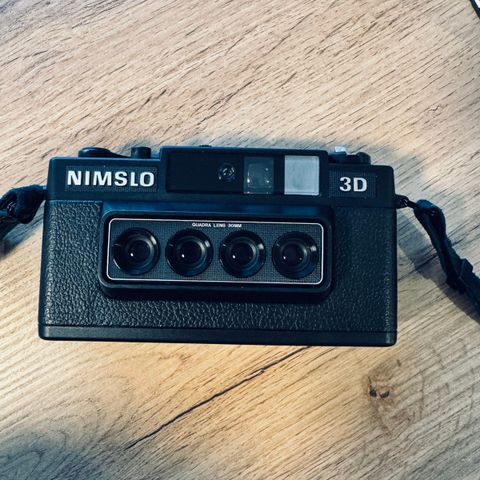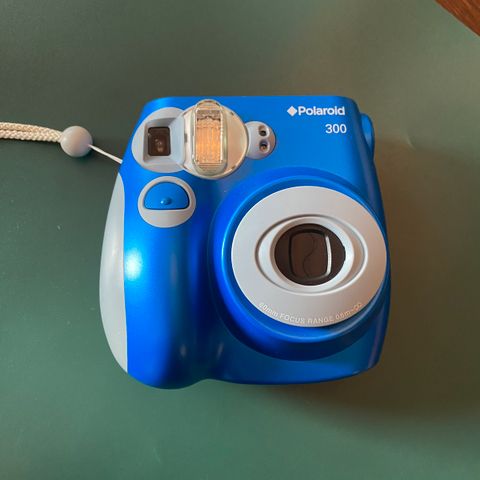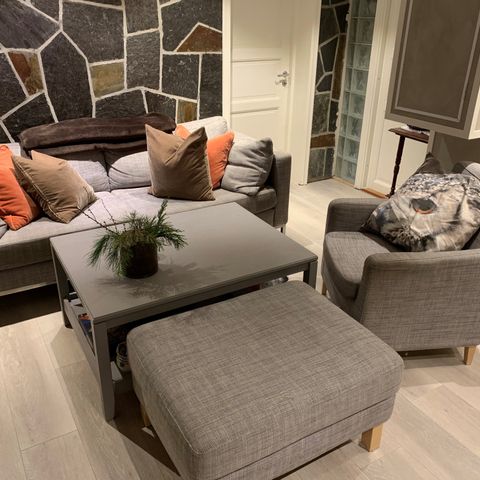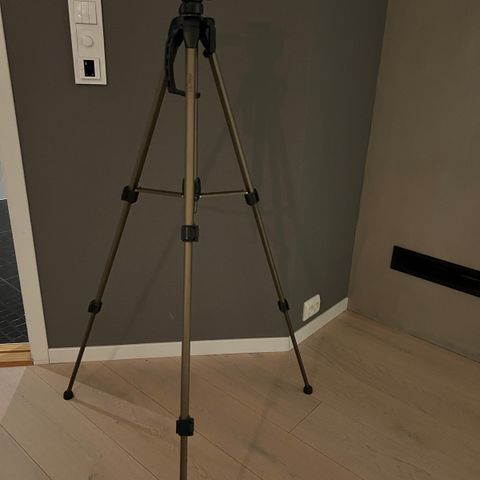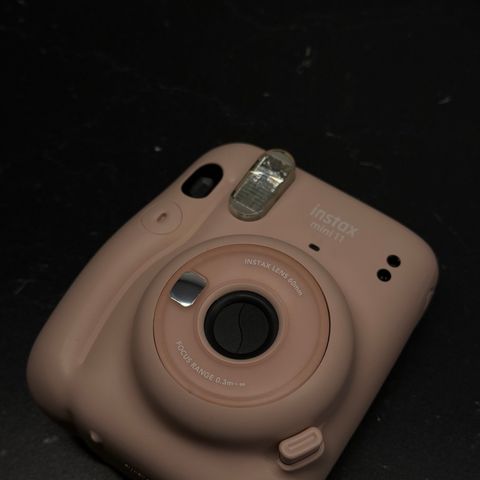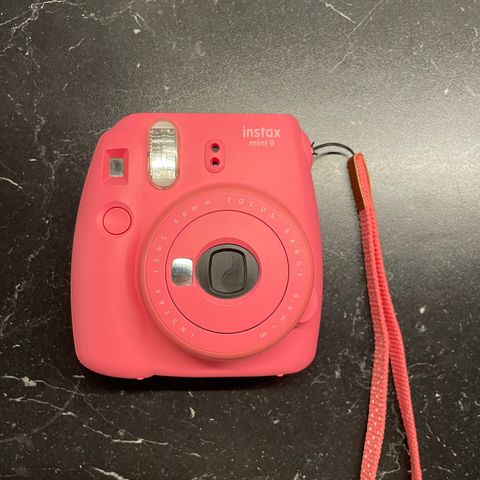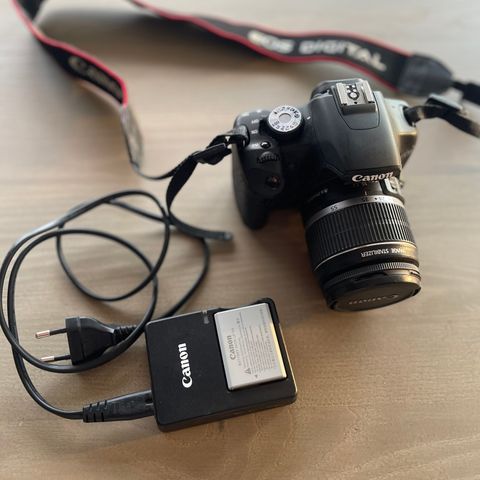Bildegalleri
(1/2)
NIKON P7000 HELT NY UBRUKT MED ESKE OG KVITTERING
Til salgs2 990 kr
Beskrivelse
Nikon allowed two years to lapse between the Coolpix P6000 and its successor, the Coolpix P7000, and, to its credit, the P7000 was a complete reworking of the P6000 rather than just an update. The most notable step is a welcome return to a lower-resolution sensor. Consumers will eat up those marketing-driven resolution boosts but the hobbyists always push back, and in this case Nikon gave the P7000 the same 10 megapixels as the rest of its class. Another redacted feature is the GPS, though I'd've thought Nikon would have replaced it with integrated Eye-Fi support--especially since Nikon incorporates such support into a lot of its other cameras. Other changes include a new sloping-top design with a completely new control layout eerily similar to the Canon G series, a longer zoom lens, a larger LCD, and HD movie capture. The camera also has a built-in neutral density filter, of which I'm a big fan.
As with the P6000, the P7000 uses "standard" OS-compatible NRW raw files rather than its proprietary NEF format, and the camera has some basic raw processing to create secondary JPEGs. It also ups the exposure bracketing to 5 shots and adds white balance and, more interestingly, ISO bracketing.
Nikon Coolpix P7000 photo samples
Typically for its class, the P7000's JPEG noise profile looks okay at ISO 200 and below, but at ISO 400 you start to see color noise creep in, and by ISO 800 details simply look mushy. While the color noise and suppression artifacts are noticeable at ISO 800, depending upon the scene content the JPEGs can still be fairly usable. Processing the P7000's files as raw doesn't seem to buy you any exposure latitude, but does give you better control over contrast and the ability to pick your artifact tradeoffs.
Like a lot of competitors, the P7000 tends to produce somewhat crunchy-looking details in places that aren't around the main focus area, especially at wide apertures. I also found the automatic white balance exceptionally cool, even taking into account the generally cool nature of February light. And it seems to clip highlights a little more frequently than comparable cameras.
The P7000's lens can be very sharp, and displays surprisingly little fringing in general. Without distortion control enabled, the P7000's lens isn't bad; it looks about the same as most 28mm-equivalent competitors. With distortion control it's pretty good. Interestingly, you don't have image stabilization options--such as choosing between full time or prefocus--other than on or off. According to the documentation, it will automatically sense panning, whether vertical or horizontal, and behave appropriately.
This model also updates its movie-capture options, though the quality is just okay. With some smeary edge detail but decent exposure and little moiré, it's fine for the occasional clip. It also can zoom during capture, and the lens is quieter than I expected, though not silent.
For the most part, the P7000's shooting performance matches that of the Canon PowerShot G12, though in some ways it feels a little slower. Neither keeps up with the Panasonic Lumix DMC-LX5, however. It takes about 2 seconds for the Nikon to power on, focus, and shoot, and it has decent single-shot focusing speed: 0.4 second in good light and 0.6 second in dim. But while its JPEG shot-to-shot time is a decent 1.9 seconds, that jumps almost a full second (to 2.8 seconds) for raw; shooting raw+JPEG feels very slow. In fact, shooting raw is slower than shooting with flash, which runs about 2 seconds from shot to shot. And if you shoot with review enabled, it seems to take a longer-than-usual amount of time to clear the display with a shutter half press, making it feel even slower. Burst speed is about 1.4 frames per second, but most of the burst modes on these cameras are too sluggish to use, anyway.
Slightly bigger and heavier than the G12, the P7000 has the same fundamental design as that model, albeit with a longer lens. It has a comfortable, rubberized grip and thumb rest that allow you to shoot one-handed.
The top mode dial offers the usual manual, semimanual, and automatic shooting modes, as well as three user-setting modes. I especially like the way you configure them, completely through the menus. So, for instance, in order to customize a setting based on shutter-priority mode, you can simply select that mode; you don't have to be on it on the dial in advance as you do on most cameras. This makes it especially easy to update existing settings.
As with the P6000, the P7000 uses "standard" OS-compatible NRW raw files rather than its proprietary NEF format, and the camera has some basic raw processing to create secondary JPEGs. It also ups the exposure bracketing to 5 shots and adds white balance and, more interestingly, ISO bracketing.
Nikon Coolpix P7000 photo samples
Typically for its class, the P7000's JPEG noise profile looks okay at ISO 200 and below, but at ISO 400 you start to see color noise creep in, and by ISO 800 details simply look mushy. While the color noise and suppression artifacts are noticeable at ISO 800, depending upon the scene content the JPEGs can still be fairly usable. Processing the P7000's files as raw doesn't seem to buy you any exposure latitude, but does give you better control over contrast and the ability to pick your artifact tradeoffs.
Like a lot of competitors, the P7000 tends to produce somewhat crunchy-looking details in places that aren't around the main focus area, especially at wide apertures. I also found the automatic white balance exceptionally cool, even taking into account the generally cool nature of February light. And it seems to clip highlights a little more frequently than comparable cameras.
The P7000's lens can be very sharp, and displays surprisingly little fringing in general. Without distortion control enabled, the P7000's lens isn't bad; it looks about the same as most 28mm-equivalent competitors. With distortion control it's pretty good. Interestingly, you don't have image stabilization options--such as choosing between full time or prefocus--other than on or off. According to the documentation, it will automatically sense panning, whether vertical or horizontal, and behave appropriately.
This model also updates its movie-capture options, though the quality is just okay. With some smeary edge detail but decent exposure and little moiré, it's fine for the occasional clip. It also can zoom during capture, and the lens is quieter than I expected, though not silent.
For the most part, the P7000's shooting performance matches that of the Canon PowerShot G12, though in some ways it feels a little slower. Neither keeps up with the Panasonic Lumix DMC-LX5, however. It takes about 2 seconds for the Nikon to power on, focus, and shoot, and it has decent single-shot focusing speed: 0.4 second in good light and 0.6 second in dim. But while its JPEG shot-to-shot time is a decent 1.9 seconds, that jumps almost a full second (to 2.8 seconds) for raw; shooting raw+JPEG feels very slow. In fact, shooting raw is slower than shooting with flash, which runs about 2 seconds from shot to shot. And if you shoot with review enabled, it seems to take a longer-than-usual amount of time to clear the display with a shutter half press, making it feel even slower. Burst speed is about 1.4 frames per second, but most of the burst modes on these cameras are too sluggish to use, anyway.
Slightly bigger and heavier than the G12, the P7000 has the same fundamental design as that model, albeit with a longer lens. It has a comfortable, rubberized grip and thumb rest that allow you to shoot one-handed.
The top mode dial offers the usual manual, semimanual, and automatic shooting modes, as well as three user-setting modes. I especially like the way you configure them, completely through the menus. So, for instance, in order to customize a setting based on shutter-priority mode, you can simply select that mode; you don't have to be on it on the dial in advance as you do on most cameras. This makes it especially easy to update existing settings.
NB: Knappen for å vise hele beskrivelsen har kun en visuell effekt.
Nøkkelinfo
- Tilstand
- Ny
Generell info
MOBILSENTERET
keysers gt. 1
0165,oslo
KJØPER,SELGER,BYTTER,UNLOCKER
NYTT OG BRUKT
TELE-MOBIL-DATA-KAMERA-MP3
WWW.MOBILSENTERET.NET
KNUST SKJERM?LÅST MOBIL? SKIFTE SPRÅK?
SNAKK MED OSS
keysers gt. 1
0165,oslo
KJØPER,SELGER,BYTTER,UNLOCKER
NYTT OG BRUKT
TELE-MOBIL-DATA-KAMERA-MP3
WWW.MOBILSENTERET.NET
KNUST SKJERM?LÅST MOBIL? SKIFTE SPRÅK?
SNAKK MED OSS
Beliggenhet

MOBILXPRESS
| FINN-kode | 44883647 |
|---|---|
| Sist endret | 29.10.2013 kl. 09:10 |



